This is part two of our sunscreen series, so if you missed the first part click here.
Is mineral sunscreen really a good replacement for chemical sunscreen? The answer is, kinda? So it’s true that mineral sunscreen is much better for you and the environment than chemical sunscreens. However, there is still a negative side to mineral sunscreen.
Evelyn is shocked to find out her mineral sunscreen can have negative effects on the environment *gasp* it’s okay we convinced her to keep it.
But, hold on! Don’t throw away all your mineral sunscreen just yet. You need to protect your skin from the sun, and mineral sunscreen is still the best option other than avoiding exposure to the sun. Let’s dive in so we can understand mineral sunscreen a little better.
The good, the bad, and the things we don’t yet understand
The good
There are some good things about zinc oxide and titanium dioxide, one being that they give you instant protection from the sun. Once you have mineral sunscreen on, you don’t have to wait before doing your fun, sun-filled activities. Another good thing about these two substances is that, as long as they aren’t used in their nanoparticle form, they do not get absorbed by our skin. Because of this, they cause little to no internal complications. This property also means that they are noncomedogenic, meaning that they don’t clog your pores. If you have sensitive skin, that’s good news. Another good thing about mineral sunscreen is that it stays on your skin longer, meaning that it will protect you from getting a horrible sunburn longer than chemical sunscreens do. Parents, think of it this way—your kiddos can run around longer without you having to haul them out of play time on the beach to reapply sunscreen. I call that a little victory for the environment and the parents.
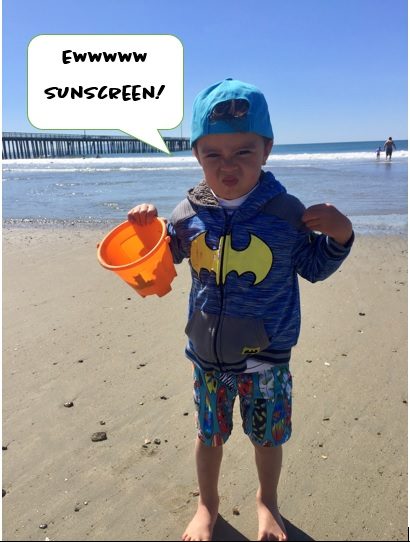
Kiddos don’t understand we have the best intention at heart… *sigh*
The bad
The chances of your skin absorbing mineral sunscreen goes up when zinc oxide and titanium dioxide get broken down into nanoparticles. According to the Environmental Working Group (EWG), “some studies indicate that nanoparticles in large doses can harm living cells and organs.” The smaller the particles are, the higher the chance of it penetrating your skin. If you are trying to buy non-nano mineral sunscreen in the United States, you might look for sunscreen labelled “Non-nano.” Unfortunately, that label—officially at least—means nothing. There is no regulation on non-nano particle sunscreen labeling, so it’s up to the company making the sunscreen to be truthful about their products.
Spray-on sunscreen is really popular right now, especially with kiddos who don’t like to stay still. However, most people don’t know that even mineral spray-on sunscreen is bad for you if you inhale it. Though the Food and Drug Administration is supposed to review the safety of sunscreens, the agency hasn’t completed review of spray-on sunscreens.
The things we don’t yet understand
If you use spray-on sunscreen, you might feel lucky—as many of us do—when half of it ends up on your body. Where does the rest go? It’s simple, into our environment. The zinc oxide and titanium dioxide can soak into the ground or get washed into the water. When this happens, there is a risk of these chemicals bioaccumulating, meaning that they can become concentrated in the body of a living organism. In other words, because the organism is not adapted to effectively digest and expel these chemicals, they are stored in its body instead.
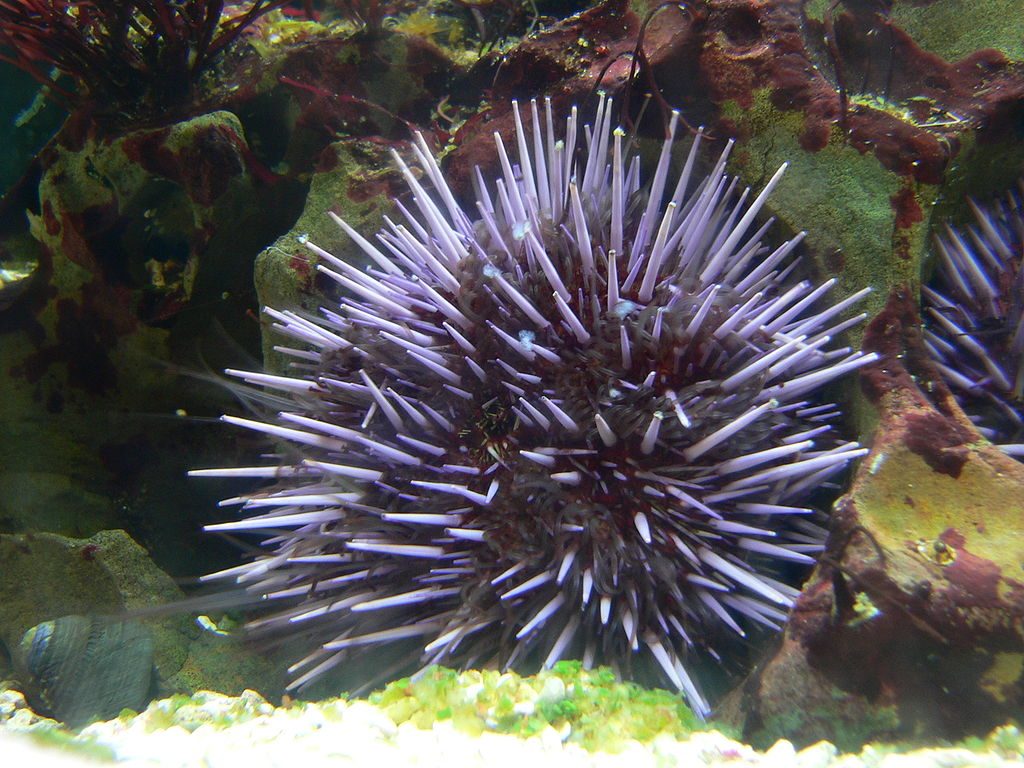
A lovely purple sea urchin Photo credit: David Monniaux
Current research: diving deeper into the science of sunscreen
When you get into the water, about twenty percent of the sunscreen on your skin washes off and enters the pool, the lake, the estuary, or the ocean—wherever you happen to be. Once it’s in the water, it can spread, potentially affecting a large number of organisms.
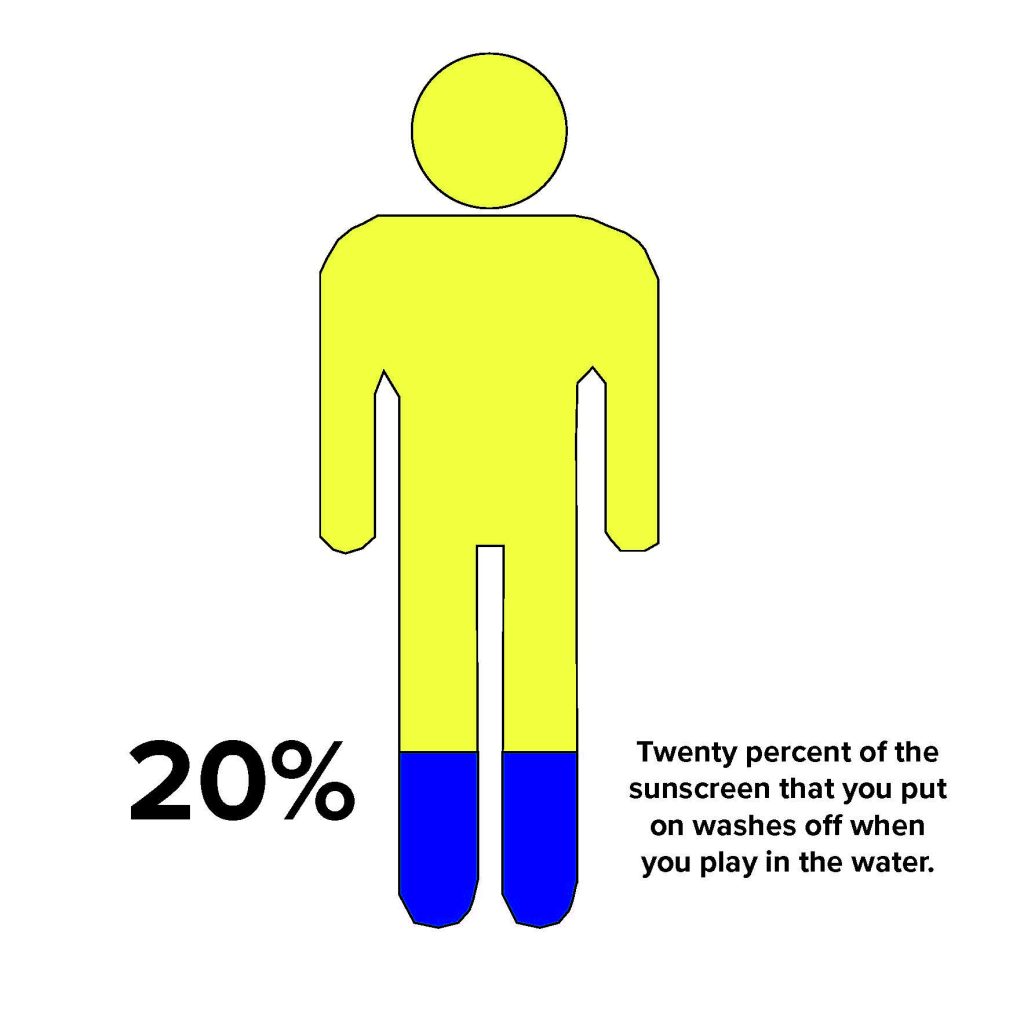
What does exposure to the chemicals and minerals from sunscreen do to wildlife? Dr. Nikki Adams, a professor at Calpoly wants to find out. Currently, Dr. Adams and a team of student researchers are testing how zinc oxide sunscreen affects purple sea urchins. Though the study is ongoing, initial lab results have indicated that all types of sunscreen, both chemical and mineral, affect the fertilization and development of sea purple sea urchins.
Below, you’ll find pictures of two sea urchins from the study in their early stages of development. The row of photographs marked “Normal” shows the development of a sea urchin that has not been introduced to sunscreen. The row of photographs marked “Abnormal” shows a sea urchin that has been treated with to zinc oxide sunscreen. Lucy Bower, a Calpoly undergraduate working under Dr. Adams, stated in an interview that “the embryos that were abnormal would never develop into an adult urchin”. Even though mineral sunscreen is safe for us there still needs to be research on how it affects the environment.
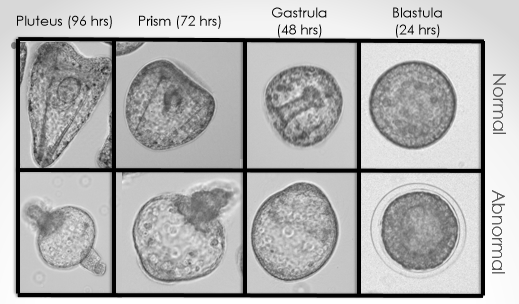
The photographs above show sea urchin in the early stages of development; the sea urchin in the top row has not been exposed to sunscreen while the sea urchin in the bottom row has been exposed to zinc oxide sunscreen. Preliminary results from Lucy Bower’s research, a Calpoly undergraduate working under Dr. Adams, show that exposure to zinc oxide sunscreen causes abnormalities in the development of sea urchins. Photo credit: Lucy Bowser
Is zinc oxide or titanium dioxide better?
If you’ve decided to use mineral sunscreen, should you choose one that includes zinc oxide or one with titanium dioxide? The mechanism through which zinc oxide and titanium oxide reflect UV rays from your skin works just the same. The main difference between the two is that they reflect different ultraviolet (UV) waves. Zinc oxide and titanium dioxide both reflect UVA and UVB; however, titanium dioxide doesn’t reflect the longer UVA rays as efficiently as zinc oxide.
The longer UVA rays go deep into your dermis, the layer of skin where your blood capillaries, nerve endings, sweat glands, hair follicles, and other structures hang out. These UVA rays cause skin to age prematurely, while the shorter UVB rays are the main culprit for skin cancer. UVC rays do exist but, thankfully, the ozone layer takes care of them for us. (We’ll take a moment to let you thank the planet.)
If you can’t see the video clip above click here.
The ozone layer is, as you might guess, primarily made up of ozone molecules. Each ozone molecule is composed of three oxygen atoms. When an ultra violet ray hits an ozone molecule, the energy from the ray is absorbed by the ozone molecule and breaks it into two pieces. One piece is an oxygen molecule, made up of two oxygen atoms, and the other is a loose oxygen atom. These parts quickly go back together, again forming an ozone molecule. During this process, the ultra-violet rays break down. Because of the wavelength of the UVC rays, they break down completely and don’t reach us like UVA and UVB rays do.
At the end there are pros and cons to both zinc oxide and titanium dioxide but, zinc oxide provides the most protection on its own with out being too cosmetically displeasing.
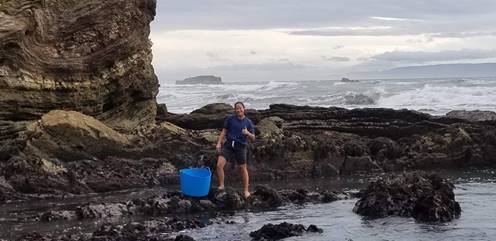
Calpoly undergraduate Lucy Bowser working hard in the field…FOR SCIENCE Photo credit: Elizabeth Hotchkiss
It’s All Good here
Even though there is a negative side to sunscreen, it is still an important tool to protect our skin. Mineral sunscreen companies like All Good and Badger are dedicated to making use of the best science available to make a product that is safe not only for us, but also for the environment.
We interviewed Caroline Duell, the founder of All Good, at the company’s headquarters in Morro Bay. Caroline said that she started using zinc oxide in her sunscreen because it was the safest chemical for humans to use as sun protection, and “It just felt right.” Then, after going to a coral reef symposium in Hawaii, she went from being passive about her choice to use zinc oxide to becoming an activist for it.
This transformation happened when she saw the negative effects that chemical sunscreen has had on the environment, especially the coral reefs. Now, she works to bring clarity on this topic to the public.
Protecting our environment keeps places like our wonderful Morro Bay healthy and beautiful. So, in the end, is mineral sunscreen the best choice for us and for the environment? It is the best option that we have now. And, hopefully, with the help of dedicated researchers and passionate sunscreen companies, we can step forward and become more aware of what we can do to help our environment.
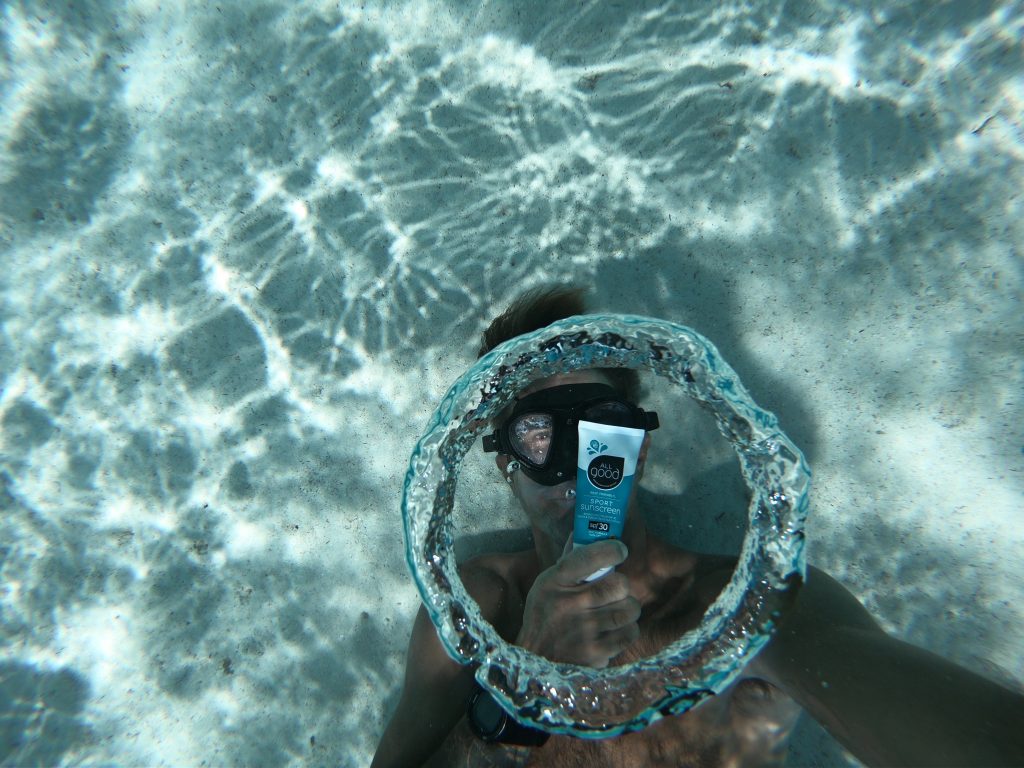
Swimmer using zinc oxide sunscreen to protect his skin while doing fun activities Photo credit: @allgoodadventures
Subscribe to our weekly blog to have posts like this delivered to your inbox each week.
Help us protect and restore the Morro Bay estuary!
-
- Donate to the Estuary Program today and support our work in the field, the lab, and beyond.
The Estuary Program is a 501(c)3 nonprofit. We depend on funding from grants and generous donors to continue our work. - Support us by purchasing estuary-themed gear from ESTERO. This locally owned and operated company donates 20% of proceeds from its Estuary clothing line and 100% of Estuary decal proceeds to the Estuary Program. Thank you, ESTERO!
- Purchase items from the the Estuary Program’s store on Zazzle. Zazzle prints and ships your items, and the Estuary Program receives 10% of the proceeds. Choose from mugs, hats, t-shirts, and even fanny packs (they’re back!) with our fun Estuary Octopus design, our classic Estuary Program logo, or our Mutts for the Bay logo.
- Donate to the Estuary Program today and support our work in the field, the lab, and beyond.
Thank you for helping our beautiful, bountiful, biodiverse bay!
Works cited
NASA. Accessed June 21, 2019. https://science.nasa.gov/ems/10_ultravioletwaves.
Ewg. “EWG’s 2019 Guide to Safer Sunscreens.” EWG. Accessed June 21, 2019. https://www.ewg.org/sunscreen/report/nanoparticles-in-sunscreen/.
Pastore, Rose, and Rose Pastore. “Don’t Use Spray Sunscreen.” Gizmodo. June 19, 2019. Accessed June 21, 2019. https://gizmodo.com/dont-use-spray-sunscreen-1827342545.
“Skin Cancer Foundation.” UVA & UVB – SkinCancer.org. Accessed June 21, 2019. https://www.skincancer.org/prevention/uva-and-uvb.
Smijs, Threes, and Pavel. “Titanium Dioxide and Zinc Oxide Nanoparticles in Sunscreens: Focus on Their Safety and Effectiveness.” Nanotechnology, Science and Applications, 2011, 95. doi:10.2147/nsa.s19419.
“Zinc Oxide Nanoparticles & Clear Zinc Sunscreens.” W.S. Badger Company, Inc. Accessed June 21, 2019. https://www.badgerbalm.com/s-33-zinc-oxide-nanoparticles-clear-zinc-sunscreens.aspx.